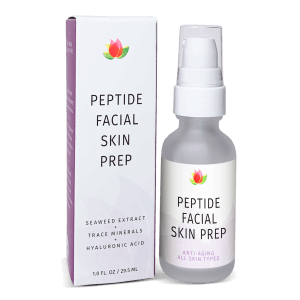Clean Beauty, Ingredients, Skin Care
7 Fascinating and Dangerous Beauty Trends of the Victorian Era
The Victorian Era was a time of opulence, elegance, and strict societal norms. Women of this era went to great lengths to adhere to societal beauty standards, often resorting to bizarre and dangerous beauty practices. From toxic cosmetics to restrictive garments, these beauty trends had far-reaching consequences on women’s health. In this article, we will explore seven fascinating and dangerous beauty trends of the Victorian Era.
1. The Pursuit of Pale Skin: The Tuberculosis Beauty Trend
During the Victorian Era, having pale skin was a symbol of beauty and social status. However, the pursuit of pale skin took a dark turn with the emergence of the tuberculosis beauty trend. Tuberculosis, also known as consumption, was a deadly disease that affected the lungs. Contrary to its fatal nature, the Victorian society romanticized tuberculosis, associating it with beauty.
Victorian women admired the pale, translucent skin, rosy cheeks, and red lips of tuberculosis patients. Some women even went to extreme lengths to emulate this look, intentionally contracting the disease. This trend led them to engage in risky behaviors such as sharing items with tuberculosis patients or visiting tuberculosis sanatoriums. Little did they know that tuberculosis was a highly contagious and life-threatening disease.
2. Deadly Cosmetics: Lead, Arsenic, and Radium
The pursuit of beauty in the Victorian Era came at a high cost. Cosmetics used during this time contained toxic substances like lead, arsenic, and even radium. Women used lead-based products to achieve a pale complexion, unaware of the severe health risks associated with lead poisoning. Arsenic, which was believed to give the skin a porcelain-like appearance, was also commonly used in cosmetics.
One popular cosmetic item was arsenic wafers, which women consumed to achieve a pale and translucent skin tone. These wafers were known to be addictive and highly toxic. Similarly, radium, a radioactive substance, was used in face paints and powders to create a glowing complexion. The harmful effects of these toxic cosmetics were not understood at the time, leading to devastating consequences for those who used them.
3. The Corset Craze: A Dangerous Fashion Statement
The hourglass figure was highly coveted during the Victorian Era, and women went to extreme lengths to achieve it. The corset, a tightly laced garment, was a staple of Victorian fashion. It cinched the waist and pushed up the breasts, creating the illusion of a smaller waist and an exaggerated hourglass shape.
However, wearing corsets for extended periods had severe consequences on women’s health. The tight lacing of corsets caused physical deformities, compressed organs, and restricted breathing. Some women even experienced fainting spells and difficulty in performing everyday tasks. Despite the discomfort and health risks, many women persisted in wearing corsets as a symbol of beauty and femininity.
4. Toxic Hair Care: Ammonia and Hair Loss
Victorian women’s obsession with beauty extended to their hair care routines. Unfortunately, their hair care practices often involved toxic substances. Ammonia, a common ingredient in Victorian hair care, was used for various purposes, including stimulating hair growth and removing unwanted hair.
Ammonia was believed to have hair-stimulating properties, but it could cause severe damage to the scalp and hair follicles. It could lead to hair loss, scalp irritation, and even respiratory problems if inhaled in excessive amounts. Despite the risks, women continued using ammonia-based hair products in their quest for luscious locks.
5. Dangerous Eye Enhancements: Belladonna Drops
In the pursuit of captivating eyes, Victorian women resorted to using belladonna drops. Belladonna, also known as deadly nightshade, was believed to enlarge the pupils and create a seductive gaze. Women would put a few drops of belladonna in their eyes to achieve this effect.
Little did they know that belladonna is one of the most poisonous plants, and even a small amount can be deadly. The use of belladonna drops posed significant risks, including severe eye irritation, rashes, and even blindness. Despite the dangers, many women continued using these eye drops in their beauty routines.
6. Toxic Teeth Whitening: Ammonia and Charcoal
Victorian women were also obsessed with achieving a bright and dazzling smile. To whiten their teeth, they resorted to using toxic substances such as ammonia and charcoal. Ammonia was believed to have teeth-whitening properties, but its use could lead to gum irritation, enamel erosion, and other dental problems.
Charcoal, another popular teeth-whitening agent, had abrasive properties that could damage the tooth enamel. Additionally, the Victorian women would often use burned bread as a makeshift toothpaste, which did little to improve oral hygiene and could introduce harmful bacteria into the mouth.
7. Poisonous Perfumes and Fragrances
Perfumes and fragrances were an integral part of Victorian beauty rituals. However, many of these perfumes contained toxic ingredients that posed health risks. Some perfumes were made with substances like mercury, which could be absorbed through the skin and lead to mercury poisoning.
Women also used fragrances that contained substances like nitrobenzene, which is highly toxic and can cause skin irritation, respiratory problems, and even liver damage. Despite the risks, the allure of intoxicating fragrances led Victorian women to continue using these poisonous perfumes.
Today’s Beauty Isn’t Perfect but It’s Far Safer
The beauty trends of the Victorian Era were not only bizarre but also dangerous. From intentionally contracting tuberculosis to using toxic cosmetics and restrictive garments, women of this era went to great lengths to adhere to societal beauty standards. However, these practices came at a high cost, with severe health consequences for many. The dangerous beauty trends of the Victorian Era serve as a stark reminder of the importance of prioritizing health and well-being over societal beauty ideals.












